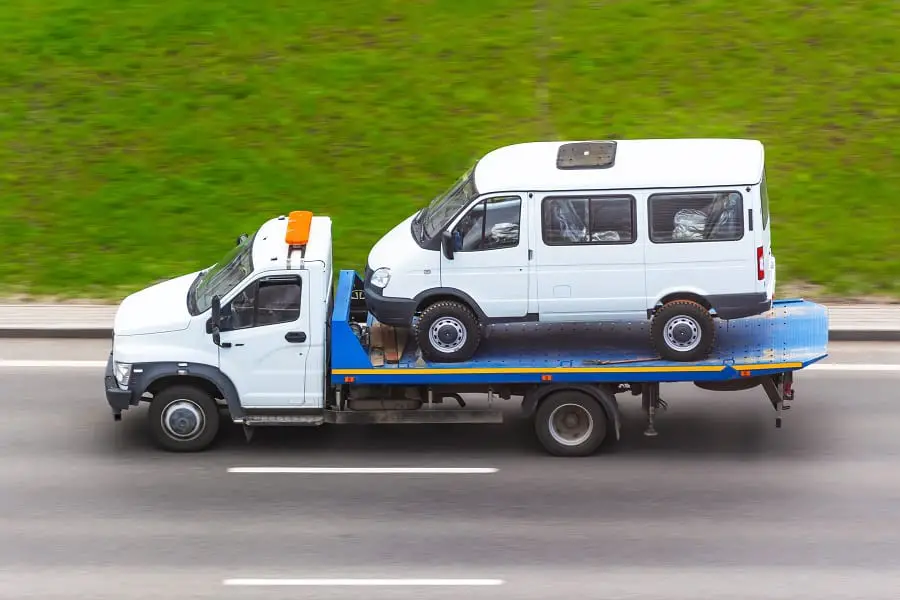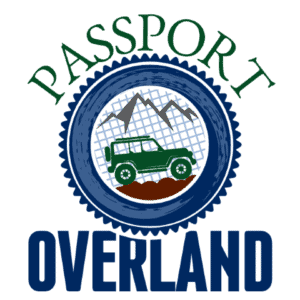
How Does Overlanding Affect Your Insurance Coverage?
If you’re fond of traveling, off-roading, and Overlanding, you are probably familiar with Overlanding insurances. In case you aren’t, we will discuss it in the following few sections.
Overlanding insurance is necessary when crossing borders and entering foreign countries. Unlike standard auto insurance, overlanding requires several third-party insurance coverages during border crossings, as well as comprehensive coverage such as collision, injury, property and all-encompassing coverage outside your local area. Therefore it is much more expensive than typical auto insurance.
Having said that, what exactly is Overlanding insurance? What coverage does it offer?
Typically, Overlanding insurances do not come with any geographical constraints and cover the majority of the locations. They also come in multiple tailor-made packages for different types of Overlanding requirements.
Most international insurance companies also offer Overlanding insurance, and you’ll have plenty of options to explore.
In this article, we will dig deeper into Overlanding insurance and discuss how exactly it affects your usual insurance coverage.
What is Overlanding Insurance?
As mentioned earlier, Overlanding and global insurances aren’t the same. In the simplest terms, Overlanding insurance is the type of insurance you need every time you cross borders with your vehicle. At times, several domestic insurance providers do not offer extensive coverage related to collision, property damage, and physical injuries among others. This is especially true when you experience these situations beyond your local territory. The solution? Overlanding insurances.
Almost all insurance agencies offer Overlanding insurances. They are, however, slightly on the pricier side. The insurance providers justify the high price given the difference in territory, laws, and similar other factors. Because these factors collectively categorize you as a high-risk individual, you are expected to pay more for an all-encompassing Overlanding insurance.
If you are looking to get off-road car insurance, you can easily get that as extra coverage from your regular vehicle insurance. The coverage is extended for Overlanding tours and the price isn’t as high.
Typically, most off-road insurances cover your travel options on roads that aren’t very popular. This includes areas that are unmarked and territories that are still uncharted. Depending on the policy of your insurance company, you can enjoy complete or partial off-roading coverage in your Overlanding insurance.
As with everything else, it also comes with a set of exceptions listing the things that are and aren’t included. In case you are unsure if your regular insurance covers Overlanding as well, it is best to consult the insurance agency. Additionally, you can also review your agreement carefully for greater depth and insight. Because insurance agencies are profit-driven ventures, you will seldom find regular insurance that includes Overlanding coverage as well.
That is why it is crucial to get off-roading or Overlanding coverage as an add-on. Alternatively, you can also explore specific insurance packages for these options and choose the one that best fits your requirements and price.
Types of Insurance Needed When Overlanding
As with everything else, Overlanding insurance can be categorized into multiple types. In this section, we will dig deeper into the many types of these insurance coverages.
Vehicle Third-Party Insurance Coverage
This insurance is mandated by the majority of the countries. However, in some nations like South Africa, it is monitored and managed by Government authorities. Overlanders are expected to produce these insurance details while trying to cross the borders of a country. This may also be required during the regular police checks on the road.
Mercosur Insurance
This insurance is needed to cross borders of South American countries like:
- Chile
- Argentina
- Paraguay
- Uruguay
- Brazil
SOAT
If you are traveling to the following countries, you might need to get SOAT insurance:
- Columbia
- Guyana
- Suriname
- Venezuela
Third-Party Border Coverage Insurance
You can qualify for third-party border coverage insurances in Central America and North America.
Yellow Card Insurance
If you are traveling to the following countries you will need Yellow Card insurance:
- Ethiopia
- Somalia
- Kenya
- Zambia
All other COMESA countries will need the Yellow Card Insurance.
Brown Card Insurance
In case you are planning to overland in ECOWAS countries Cameroon, Ivory Coast, and Mali among others, you might need to apply for Brown Card Insurance.
Orange Card Insurance
This insurance solely applies to all Middle Eastern countries.
CTP
If you are visiting Australia you would need a CTP which again is mandated insurance from a third-party insurance provider.
OSAGO
In Central Asia, you would need the OSAGO insurance that will let you travel to Uzbekistan, Tajikistan, and similar countries.
Blue Card Insurance
If you are traveling to Southeast Asian countries you would need the Blue Card insurance.
Compulsory and Commercial Insurance
You will need both these insurances when traveling to East Asian countries.
3 Companies That Provide Compulsory and Commercial Insurance Coverage
Now that you know all about Overlanding insurances, you are probably wondering which companies offer these services. To make things easier for you, we have curated a list of three leading companies that offer different types of Overlanding insurances.
Farmers Insurance
To check out ATV Insurance & Off-Road Vehicle Insurance from Farmers Insurance click here.
If you are looking to embark on an adventurous ride on your Overlanding vehicle, you might want to check out Farmers Insurance. The company covers a range of Overlanding insurance for different types of vehicles including (but not limited to) dirt bikes, buggies, ATVs, and Snowmobiles among others. The best part: you will get a host of customizable components with Farmers Insurance. So, while exploring the insurance plans, you can always choose specific services and create a tailored package for your needs.
Currently, the company offers collision, liability, theft, and physical injury coverage. You can also avail of additional coverage if your vehicle is damaged by a driver who doesn’t have insurance.
Allstate Insurance
This is yet another leading player when it comes to Overlanding and off-roading insurances. As with Farmers Insurance, the company offers a range of coverages including coverage from collision, physical injuries, and vehicle damage. Additionally, you also get a comprehensive all-encompassing package that includes almost all major types of Overlanding insurance coverage options. Check out their offroad insurance here.
State Farm
To get an Off-Road Vehicle Insurance Quote – State Farm® click here.
With more than 19,000 agents across the US and 24*7 customer support, State Farm is popular for its off-roading insurance packages. The company offers some basic packages like physical injury under multiple conditions, vehicle theft coverage, vandalism coverage, et al. Almost all Overlanding and offroading vehicles are eligible for the insurance. So, whether you have a dirt bike, golf cart, buggy, or anything in between- State Farm will have you covered.
Cost of Insurance Coverage
While the price of insurance coverage varies depending on the player, we still have an average median as per the latest trends. Currently, ATV insurance will cost you something around $4000 to $10000. In case you are looking for ROV insurance, you might have to spend as much as $12,000, though they are also available at lower prices starting at $8000.
The price of the Overlanding insurance will boil down to the features and the type of coverage it offers. If you have opted for insurance that covers entire liability, bodily damage, theft, and collision, chances are, you need to pay a higher price for the package.
What Does It Cover?
At this point, you probably already know what Overlanding insurance covers. However, we will still add some more detail to help you get a clearer picture of the subject. The following are some of the common coverages offered by top insurance companies:
- Coverage against collision
- Physical injury
- Property damage coverage
- All-encompassing coverage
Let’s take a closer look.
Coverage Against Collision
While Overlanding you may find yourself in a situation where your vehicle has struck a passing vehicle, an object, or a tree. If your insurance has this facility, the repair cost will be duly covered.
Physical Injury Coverage
Overlanding trips are adventurous, but they also come with their fair share of risks. For instance, you have encountered an accident leading up to the physical injury of another individual. In these cases, your physical injury coverage will cover the expenses of the injured individual. This may not seem relevant to many but is crucial, regardless because medical expenses can easily shoot up in countries like the US.
Property Damage Coverage
At times, you may end up hurting or damaging someone’s property, possession, or asset. In this case, the property coverage will cover the repair expenses regardless of the extent of the damage.
All-Encompassing Coverage
Also known as the comprehensive coverage, this one comes as an optional set to your usual coverage. It typically covers your expenses when your Overlanding vehicle is vandalized or stolen by any other defining cause except collision. Natural catastrophes can be an excellent example.
The Bottom Line
While many tend to ignore Overlanding insurances, they are crucial, to say the least. The right insurance will offer comprehensive coverage and protect you from odd and unexpected situations in an unfamiliar geographical territory.
Because we have listed the top insurance options in this category, we are certain you will have an easier time navigating through it. Either way, the right insurance will not only protect you from all types of physical damage but also offer theft and vandalism coverage.
Don’t think twice before paying a hefty price because some of these insurances may be expensive. However, before you do that, read the fine print and make sure the package is worth your money.

